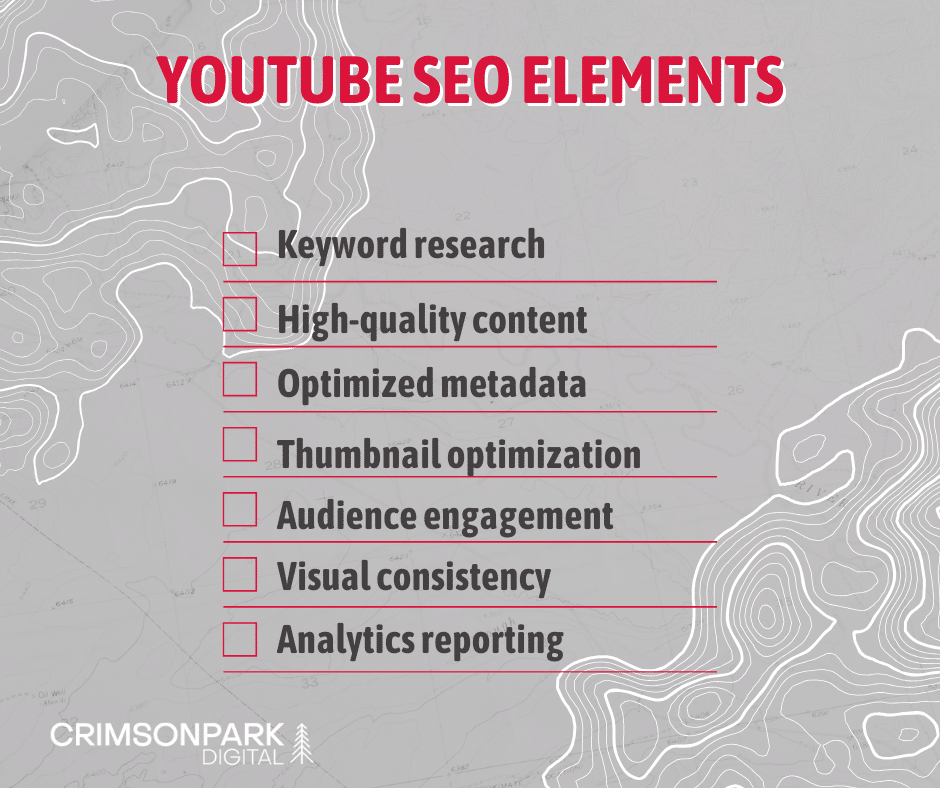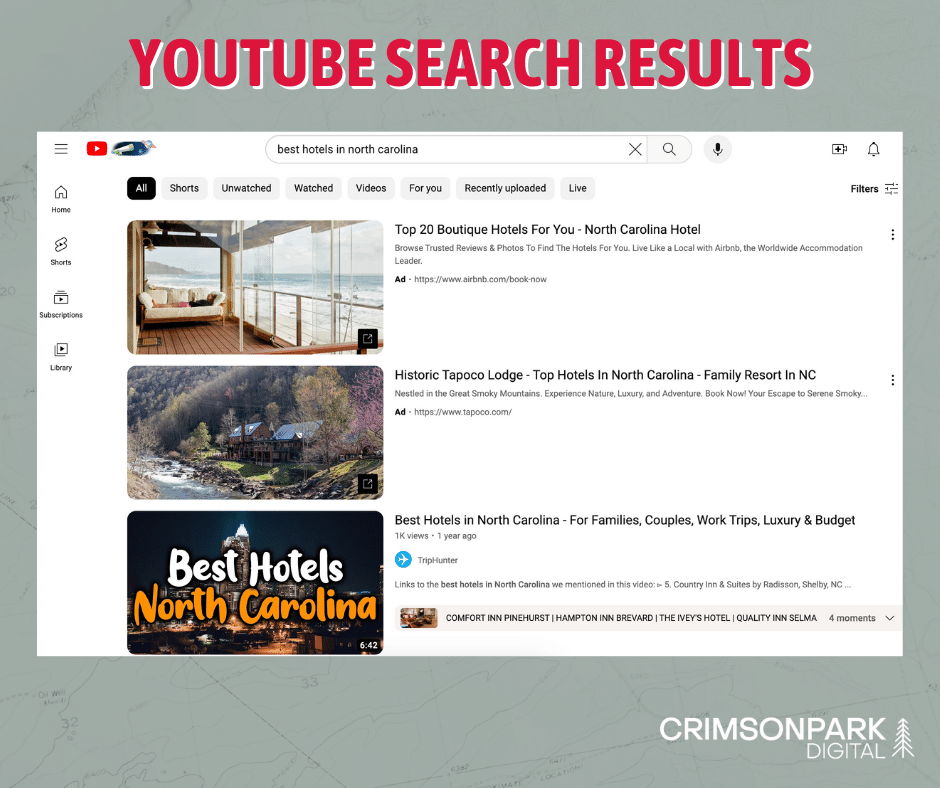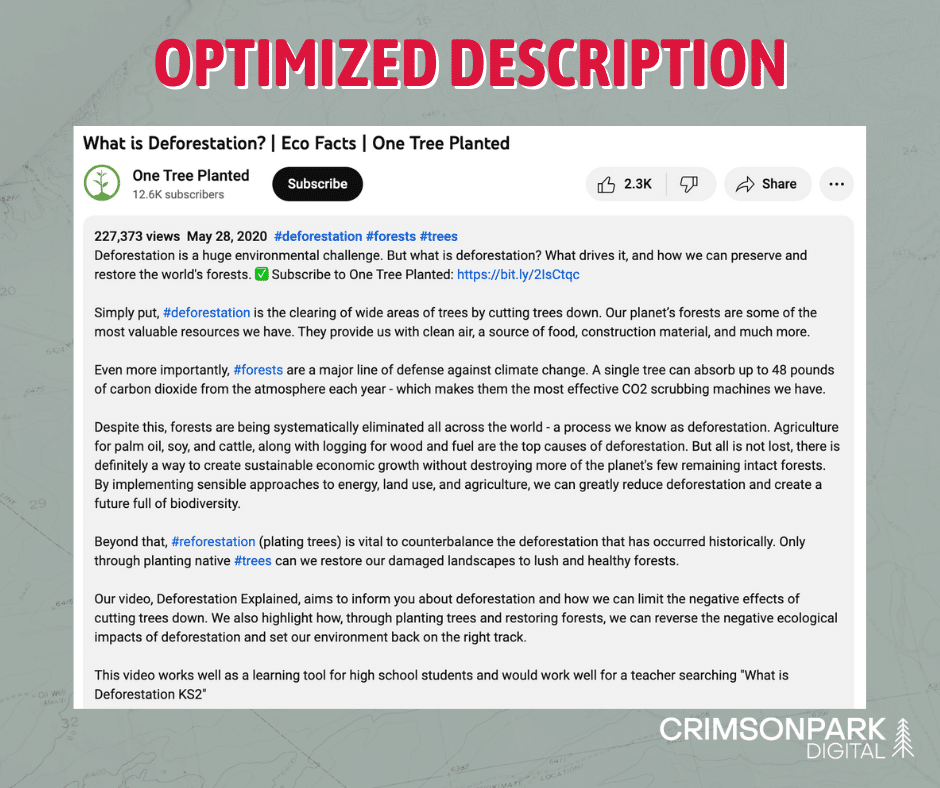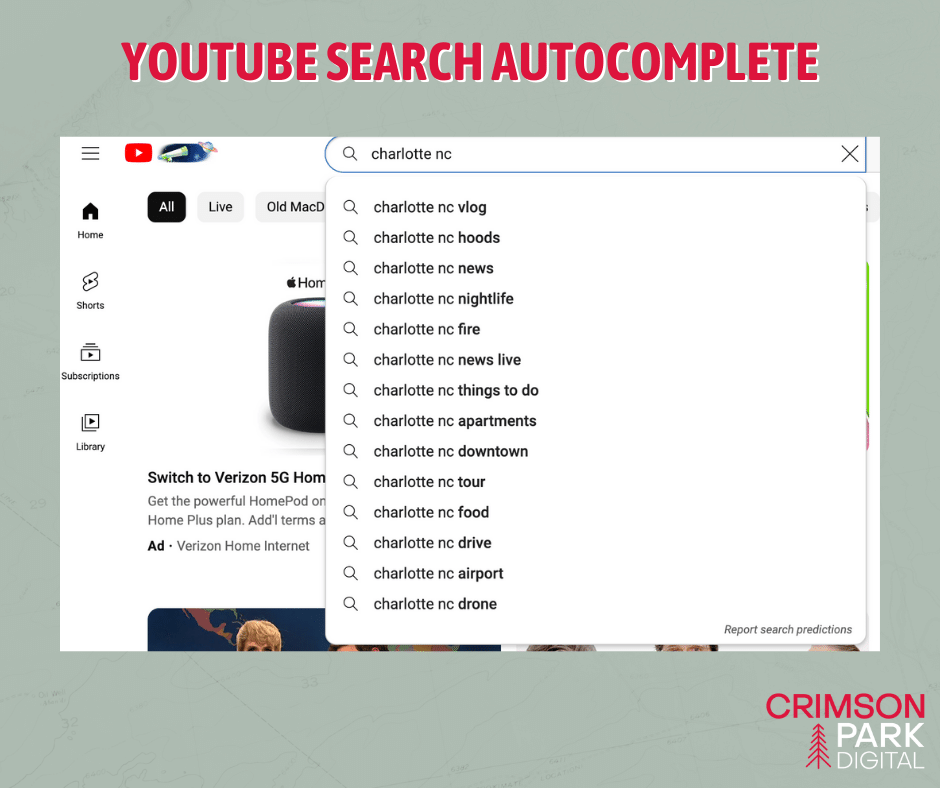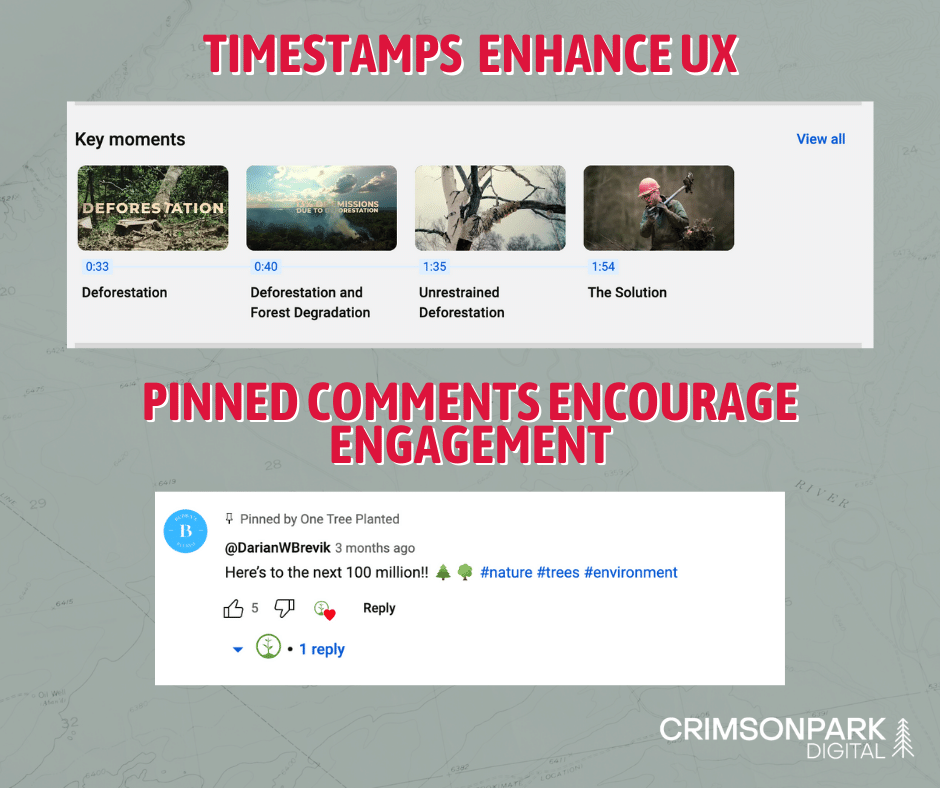Optimizing Videos for YouTube Search: A Guide to YouTube SEO
With over 2 billion monthly users, YouTube is a colossal platform. This makes it beyond important for content creators to stand out amongst the masses. It’s not just video virality that can drive traffic, though; it’s also effective YouTube SEO. A strategic SEO approach boosts YouTube video visibility, increases the likelihood of attracting a larger and more engaged audience, drives organic traffic, and ultimately achieves your video marketing goals.
We’re outlining the essential SEO strategies and techniques to help you optimize your YouTube videos for maximum rank and reach.
What is YouTube SEO?
YouTube SEO, or YouTube Search Engine Optimization, is the practice of optimizing video content and channels to rank higher in YouTube’s search results and recommendations. It’s a strategic approach aimed at improving the visibility and discoverability of videos on the platform. These improvements ultimately drive more organic views, subscribers, and engagement.
YouTube SEO involves several key elements:
- Keyword Research: Identifying relevant and high-performing keywords that align with your video content. These keywords should be integrated into your video titles, descriptions, tags, and closed captions.
- High-Quality Content: Creating compelling, informative, and engaging videos that resonate with your target audience. High-quality content is more likely to rank well and retain viewers.
- Optimized Metadata: Crafting descriptive and keyword-rich video titles, detailed descriptions, and tags that accurately represent your content. This helps YouTube’s algorithm understand your video’s context and relevance.
- Thumbnail Optimization: Designing eye-catching thumbnails that entice viewers to click on your video. A compelling thumbnail can significantly impact click-through rates.
- Audience Engagement: Encouraging likes, comments, shares, and subscriptions. Higher engagement signals to YouTube that your content is valuable and can lead to better rankings.
- Consistency: Maintaining a consistent posting schedule and brand identity across your channel. Regular uploads can help build a loyal subscriber base.
By incorporating these aspects of YouTube SEO in your marketing strategy, you can increase your video’s chances of appearing in search results and recommendations, and grow your organic audience.
Why SEO is Important on YouTube
YouTube SEO is a vital tool for businesses. It enables them to position their video content where potential buyers are actively searching for information.
According to a study by Google, as many as 70% of YouTube viewers reported that they used the platform to help make purchase decisions.
By optimizing videos effectively, companies can guide and influence consumers during each of their research phases. This fosters brand awareness, trust, and ultimately, conversions. Videos for product demos, how-to guides, and customer reviews facilitate a deeper understanding of brands, moving watchers along in their buyer journey.
SEO-optimized videos also have a higher chance of engaging users who are actively searching for information related to your brand. When you optimize a video for SEO on YouTube, it gains a competitive advantage by positioning your brand and its message ahead of non-optimized competitor content.
Furthermore, YouTube SEO contributes to building trust and credibility. High-quality videos, when optimized correctly, can establish your brand as an authoritative source of information. When viewers find your content valuable and reliable, they are more inclined to trust your recommendations and consider your products or services.
Understanding the YouTube Algorithm
YouTube, as part of Google, operates with a search algorithm that’s pretty similar to that of the search giant. This algorithm takes several things into account in each video to decide how well it matches what users are searching for.
Some things YouTube considers when weighing search results are:
- The video’s title
- The video’s description
- The video’s tags
- Video views
- Comments
- Likes
- The user’s video-watching history
The result of these factors is an algorithm that attempts to serve a video that matches exactly what the user is seeking when they’re searching. In order to take full advantage of the algorithm via YouTube SEO, your brand will need to understand its audience, and their search intent and preferences.
10 Best Practices for YouTube SEO
The following best practices for YouTube SEO are essential techniques to boost your video’s visibility, engage your audience, and get your brand’s content competitively ranked.
1. Use keywords in the video file and title
Incorporating relevant keywords into your video’s file name and title is essential for enhancing its visibility in YouTube search results. By doing so, you increase the likelihood of your content being discovered by viewers interested in your topic, ultimately driving more organic traffic to your channel.
2. Optimize the video’s description
Crafting comprehensive video descriptions that not only summarize your content but also include relevant keywords is crucial for YouTube SEO. These descriptions not only help potential viewers understand what your video is about, but also provide vital information to YouTube’s algorithm. This improves the video’s chances of being recommended to a broader audience.
3. Tag your video
Tagging your video with popular and pertinent keywords plays a pivotal role in categorizing and contextualizing your content. These tags assist YouTube in understanding your video’s subject matter, and make it more likely to appear as a relevant recommendation alongside similar videos, expanding your reach.
4. Properly categorize your video
Properly categorizing your video under the appropriate YouTube category is essential for ensuring that it appears in the right context. This not only aids discoverability but also helps YouTube’s algorithm recommend your video to users interested in that specific subject.
5. Add subtitles & closed captions
Including an SRT file for subtitles and closed captions not only enhances accessibility for a broader audience, including those with hearing impairments but also improves your video’s search engine indexing. This indexing can potentially increase the reach of your video and make it more discoverable to a wider audience.
6. Utilize YouTube’s engagement features
Utilizing Cards and End Screens is a great way to keep viewers engaged with your content and promote other videos on your brand’s channel. By strategically placing these features, you can extend watch time and encourage viewers to explore more of your content, ultimately increasing your channel’s visibility and audience retention.
7. Create a playlist about your video’s general topic
Building playlists centered around your video’s general topic encourages viewers to engage with more of your content in one sitting. This extended viewing session not only enhances user experience but also improves your video’s search rankings, as YouTube rewards content that keeps users engaged for longer periods.
8. Use YouTube’s autocomplete feature
“Autocomplete” is what happens when you start searching for something in the YouTube search bar, and it suggests several queries in a drop-down. This feature allows you to discover search terms that are related to your brand or industry and align video topics accordingly.
9. Add timestamps
Implementing timestamps in your video description offers viewers a convenient way to navigate to specific sections of your content. This feature enhances user experience and encourages viewers to engage with your video for more extended periods, signaling to YouTube that your content is valuable and relevant.
10. Pin a comment on your own video
Leaving a pinned comment on your video provides an opportunity to offer additional context, ask questions, or encourage viewer interaction. Pinned comments often appear at the top of the comment section, making them more visible and increasing the likelihood of viewer engagement, which can positively impact your video’s ranking and visibility on the platform.
Implementing these best practices for YouTube SEO enhances your video’s discoverability, increases engagement, and improves its chances of ranking higher in search results, ultimately helping you grow your channel and reach a broader audience.
Tools for Analyzing the Effectiveness of YouTube SEO
Marketing tech helps refine video optimization strategies for YouTube and makes the process that much easier. The 2 tools we consider essential for YouTube SEO are Semrush and YouTube Analytics.
Semrush is a comprehensive SEO tool that provides valuable insights into YouTube SEO. It offers keyword research capabilities to help discover relevant keywords, their search volume, and competition. Additionally, Semrush allows you to track your video’s rankings, analyze your competitors’ performance, and monitor the effectiveness of your YouTube SEO strategy.
YouTube Analytics is YouTube’s built-in tool for monitoring the performance of your videos. It provides essential metrics such as views, watch time, audience demographics, and engagement data like likes, comments, and shares. This tool is invaluable for assessing which videos are resonating with your audience and which may need improvement.
We’re experts at SEO, both traditional and on YouTube. Reach out to us today to find out how we can help get your videos in front of the right audience.
Frequently Asked Questions
What are the best practices for YouTube SEO?
Best practices for YouTube SEO include optimizing video titles, descriptions, and tags with relevant keywords, creating engaging content that encourages viewer engagement, and leveraging tools like YouTube Analytics to monitor performance and make data-driven improvements.
How can I effectively use tags to improve my video's search visibility on YouTube?
Tags play a vital role in YouTube SEO by helping categorize and contextualize your videos. To use them effectively, choose tags that are both popular and relevant to your content, ensuring they accurately reflect the video's topic and keywords.
Why is audience engagement important for YouTube SEO?
Audience engagement, including likes, comments, shares, and watch time, is a crucial factor in YouTube's algorithm. Higher engagement signals that your content is valuable and relevant, improving your video's rankings. To boost engagement, encourage viewer interaction, respond to comments, and create engaging content that keeps viewers watching.
